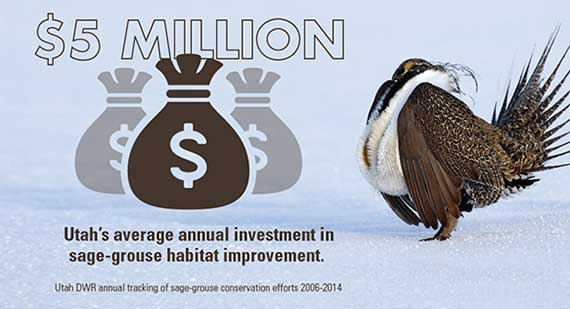Greater sage-grouse
Conservation, management is a top priority for Utah wildlife managers.
In February 2013, Gov. Gary R. Herbert authorized the Conservation Plan for Greater Sage-Grouse in Utah. It was a detailed, scientifically based plan that established goals and measurable objectives for the conservation of greater sage-grouse in Utah. As a result of that plan and other ongoing conservation efforts — including similar state-led efforts across the West — the U.S. Fish and Wildlife Service (USFWS) announced on Oct. 2, 2015 that greater sage-grouse are "not warranted" for listing under the Endangered Species Act.
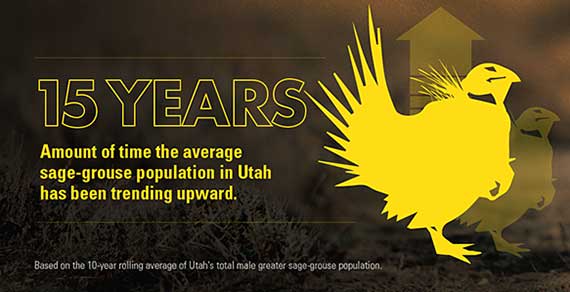
Gov. Herbert ordered state officials to coordinate with stakeholders in 2017 to review that 2013 plan, and to ensure that Utah's conservation efforts continue to incorporate new and best-available science, data and knowledge. This Utah Conservation Plan for Greater Sage-Grouse (Plan) is the revised and updated outcome of that stakeholder review process. It effectively:
- Builds upon the progress made during past planning processes.
- Improves implementation of future actions by incorporating important lessons learned.
- Seeks to clarify the State of Utah's conservation approach to its stakeholders.
- Provides a proven conservation framework to ensure that greater sage-grouse will remain "not warranted" for listing under the Endangered Species Act.
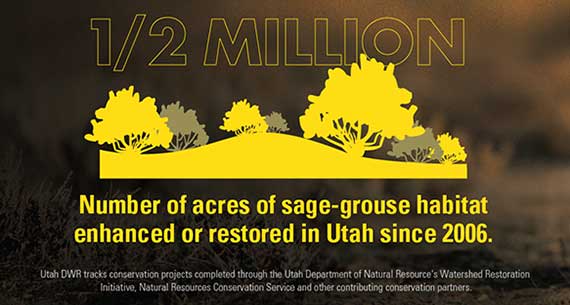
The management plan
The goal of this Plan is to protect, maintain and increase sage-grouse populations and habitats within Sage-Grouse Management Areas (SGMAs). That goal will be accomplished by meeting the two primary objectives of this plan, which are to:
- Maintain and increase sage-grouse populations statewide, and within each SGMA.
- Maintain, protect and increase sage-grouse seasonal habitats within SGMAs.
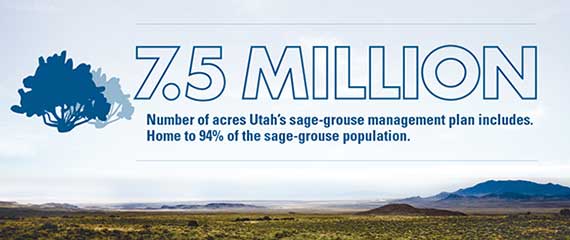
To meet those objectives, this Plan identifies strategies to address localized threats to sage-grouse populations in Utah. Those strategies include — but are not limited to — the following:
- Identify the highest-priority sage-grouse habitats and migration corridors, and protect at least 5,000 of those acres annually through conservation easements, or other mechanisms.
- Improve and increase sage-grouse seasonal habitats by 75,000 acres each year, including riparian and mesic habitats.
- Monitor sage-grouse population trends annually and, if necessary, implement adaptive management responses to ensure that priority populations remain viable and stable.
- Coordinate with local, state and federal firefighting jurisdictions to include sage-grouse habitats as a priority during pre-fire attack planning and suppression, second only to the protection of human life and property.
- Fund, support and implement critical research that supports the implementation of this Plan.
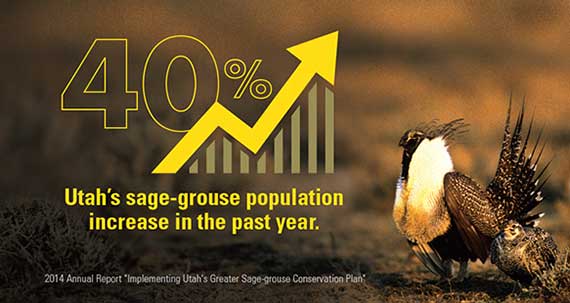
With the ongoing commitment, innovation and collaboration of the State of Utah and its many conservation partners, this Plan will continue to conserve sage-grouse and the habitats upon which they depend, while still balancing the socioeconomic needs of the people of Utah.
